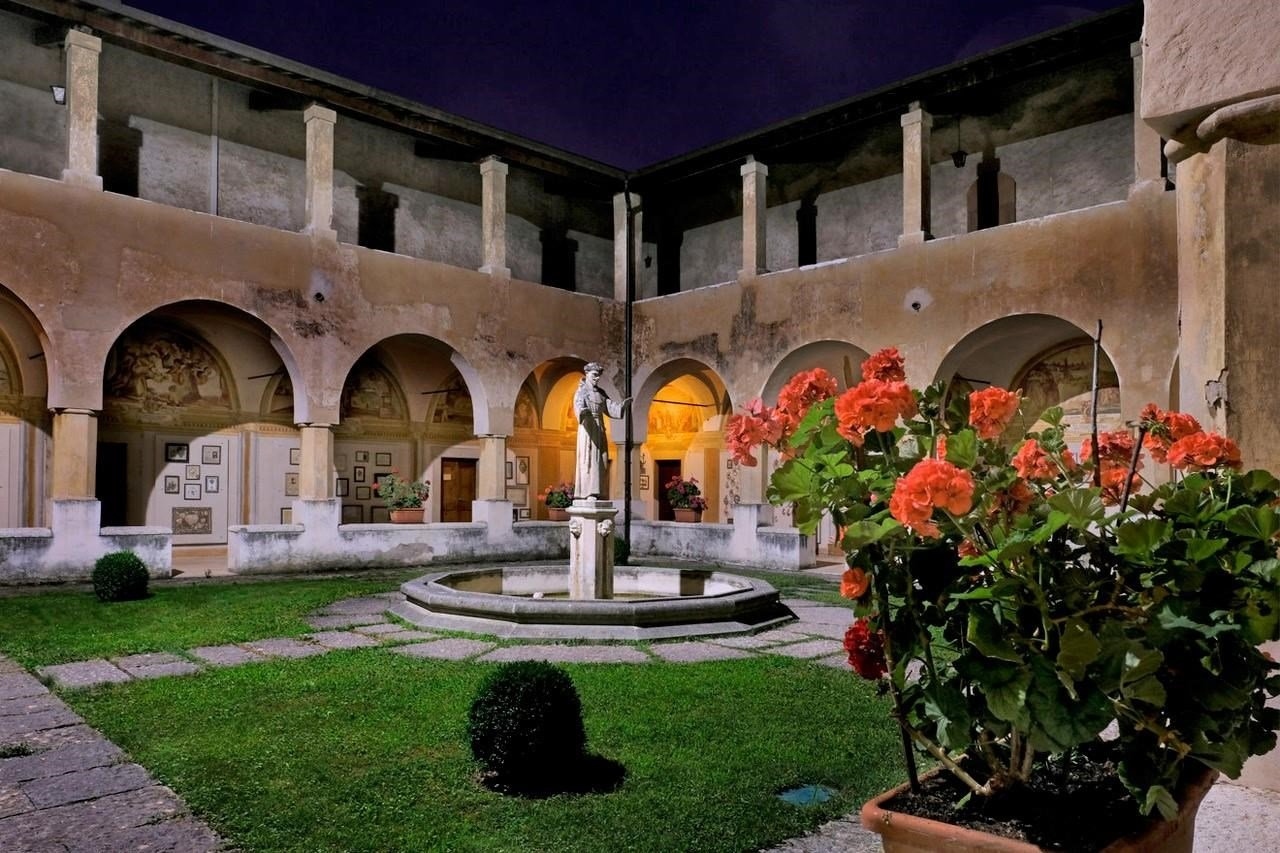The Locanda al Santuario offers breathtaking views and a serene garden retreat.
LONDON, 2024-Sep-19 — /Travel PR News/ — Traditionally, the cloisters, kitchen gardens and herb beds of Europe’s monasteries were places for monks and nuns to meditate and work. They weren’t places most pilgrims and travellers could visit. Today, however, many monasteries and abbeys are throwing open their garden gates to growing numbers of tourists and volunteers, reveals a leading travel expert.
Lily Smith, from Monasteries.com, says: ‘If there is truth to the old saying “One is nearer God’s heart in a garden, than anywhere else on Earth,” then that must certainly be the case for monastery and abbey gardens. Since the dawn of monasticism in the 6th century, gardens have been an integral part of monastic life. Mixing beauty and practicality, they offer far more than just historical interest – they are living repositories of traditional knowledge and wisdom, passed down through generations of patient cultivation.
‘Traditional monastic enclosed gardens have roots dating back to Persian paradise gardens and, for centuries, their cloisters have provided places for monks and nuns to meditate in tranquillity. Other areas of these gardens have grown foods to sustain the community and herbs such as sage, rue and hyssop. These were used to heal the sick, treating ailments ranging from digestive issues to headaches.
‘For centuries, such gardens were off-limits to visitors but many monasteries now welcome guests who appreciate their beauty and significance and who can help to ensure their continued existence. Many monasteries and convents rely on donations and the sale of their garden produce, so every visit makes a difference.
‘For people seeking a deeper engagement with monastic gardening, many communities also offer opportunities for retreats and volunteering. These allow participants to live and work alongside monks and nuns, learning firsthand about their horticultural practices and spiritual traditions.
‘By supporting monastic gardens today, we can all help to preserve this invaluable heritage. The techniques and practices developed by monks and nuns over centuries – from plant propagation to soil management – mean these sustainable, small-scale methods of gardening can offer valuable insights for modern horticulture.
‘The story of monastic gardens really began in 6th-century Italy with Benedict of Nursia, whose famous “Rule” instructed monasteries to grow their own food if possible, making the garden an essential part of cloistered life. As monasticism spread in the early Middle Ages, so too did this tradition of the garden as a sacred space for labour and reflection. From Ghent to the tranquil shores of Lake Garda, here are four extraordinary monastic gardens that were once largely unknown but now allow tourists to visit and stay. Many of the trees and plants are particularly colourful in the autumn.
‘Nestled in the heart of Florence, the Foresteria Valdese is a hidden gem that dates back to the 16th century. This former palazzo boasts a stunning garden enclosed by a portico with cross-vaulted ceilings. The garden’s ancient origins are evident in its timeless beauty, with lush greenery and quiet corners. Guests can stay in the palazzo’s comfortable rooms and enjoy the tranquil atmosphere of this historic site.
‘For a taste of monastic hospitality in the Low Countries, Ghent’s Het Rustpunt is the ideal choice. This charming guesthouse offers simple but comfortable accommodation, along with access to a lovely, enclosed garden. Rooms are available from £87 a night in October.
‘Perched on the shores of Lake Garda, the Locanda al Santuario offers breathtaking views and a serene garden retreat. This former monastery has been transformed into a welcoming hotel, complete with a terrace overlooking the lake. Rooms available from £92.28 a night in October.
‘Pay a visit to the beautiful Villa Crawford in Sorrento, which was once home to American writer Francis Marion Crawford (1854-1909). He fell in love with the town and made it his permanent residence. Today, the villa’s lush gardens and elegant architecture testify to the novelist’s taste. Rooms available from just £48.57 in October.
‘By supporting monastic gardens through visits, retreats and volunteering, we help to ensure that they will continue to thrive for generations to come. Booking a stay in an abbey, convent or monastery is surprisingly easy. The unique accommodation site Monasteries.com provides a booking platform for religious orders with stays across mainland Europe, Great Britain and Ireland. To discover more about the history and beauty of monastic gardens, see Monasteries.com’s new guide at: https://www.monasteries.com/travel-inspiration/monastic-gardens-cultivating-the-soul-through-the-centuries

